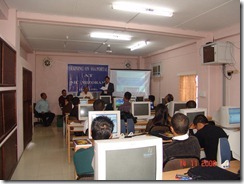Sex Is Cheap
Why young men have the upper hand in bed, even when they're failing in life.
By Mark Regnerus

We keep hearing that young
men are failing to adapt to contemporary life. Their financial prospects are impaired—earnings for 25- to 34-year-old men have fallen by 20 percent since 1971. Their college enrollment numbers trail women's: Only 43 percent of American undergraduates today are men. Last year, women made up the majority of the work force for the first time. And yet there is one area in which men are very much in charge: premarital heterosexual relationships.
When attractive women will still bed you, life for young men, even those who are floundering, just isn't so bad. This isn't to say that all men direct the course of their relationships. Plenty don't. But what many young men wish for—access to sex without too many complications or commitments—carries the day. If women were more fully in charge of how their relationships transpired, we'd be seeing, on average, more impressive wooing efforts, longer relationships, fewer premarital sexual partners, shorter cohabitations, and more marrying going on. Instead, according to the National Longitudinal Study of Adolescent Health (which collects data well into adulthood), none of these things is occurring. Not one. The terms of contemporary sexual relationships favor men and what they want in relationships, not just despite the fact that what they have to offer has diminished, but in part because of it. And it's all thanks to supply and demand.
To better understand what's going on, it's worth a crash course in "sexual economics," an approach best articulated by social psychologists Roy Baumeister and Kathleen Vohs. As Baumeister, Vohs, and others have repeatedly shown, on average, men want sex more than women do. Call it sexist, call it whatever you want—the evidence shows it's true. In one frequently cited study, attractive young researchers separately approached opposite-sex strangers on Florida State University's campus and proposed casual sex. Three-quarters of the men were game, but not one woman said yes. I know: Women love sex too. But research like this consistently demonstrates that men have a greater and far less discriminating appetite for it. As Baumeister and Vohs note, sex in consensual relationships therefore commences only when women decide it does.
And yet despite the fact that women are holding the sexual purse strings, they aren't asking for much in return these days—the market "price" of sex is currently very low. There are several likely reasons for this. One is the spread of pornography: Since high-speed digital porn gives men additional sexual options—more supply for his elevated demand—it takes some measure of price control away from women. The Pill lowered the cost as well. There are also, quite simply, fewer social constraints on sexual relationships than there once were. As a result, the sexual decisions of young women look more like those of men than they once did, at least when women are in their twenties. The price of sex is low, in other words, in part because its costs to women are lower than they used to be.
But just as critical is the fact that a significant number of young men are faring rather badly in life, and are thus skewing the dating pool. It's not that the overall gender ratio in this country is out of whack; it's that there's a growing imbalance between the number of successful young women and successful young men. As a result, in many of the places where young people typically meet—on college campuses, in religious congregations, in cities that draw large numbers of twentysomethings—women outnumber men by significant margins. (In one Manhattan ZIP code, for example, women account for 63 percent of 22-year-olds.)
The idea that sex ratios alter sexual behavior is well-established. Analysis of demographic data from 117 countries has shown that when men outnumber women, women have the upper hand: Marriage rates rise and fewer children are born outside marriage. An oversupply of women, however, tends to lead to a more sexually permissive culture. The same holds true on college campuses. In the course of researching our book Premarital Sex in America, my co-author and I assessed the effects of campus sex ratios on women's sexual attitudes and behavior. We found that virginity is more common on those campuses where women comprise a smaller share of the student body, suggesting that they have the upper hand. By contrast, on campuses where women outnumber men, they are more negative about campus men, hold more negative views of their relationships, go on fewer dates, are less likely to have a boyfriend, and receive less commitment in exchange for sex.
The National Longitudinal Study of Adolescent Health data offer other glimpses into just how low the cost of sex is for young men ages 18 through 23. Take the speed with which these men say their romantic relationships become sexual: 36 percent of young men's relationships add sex by the end of the second week of exclusivity; an additional 13 percent do so by the end of the first month. A second indicator of cheap sex is the share of young men's sexual relationships—30 percent—that don't involve romance at all: no wooing, no dates, no nothing. Finally, as my colleagues and I discovered in our interviews, striking numbers of young women are participating in unwanted sex—either particular acts they dislike or more frequent intercourse than they'd prefer or mimicking porn (being in a dating relationship is correlated to greater acceptance of and use of porn among women).
Yes, sex is clearly cheap for men. Women's "erotic capital," as Catherine Hakim of the London School of Economics has dubbed it, can still be traded for attention, a job, perhaps a boyfriend, and certainly all the sex she wants, but it can't assure her love and lifelong commitment. Not in this market. It's no surprise that the percentage of 25- to 34-year-olds who are married has shrunk by an average of 1 percent each year this past decade.
Jill, a 20-year-old college student from Texas, is one of the many young women my colleagues and I interviewed who finds herself confronting the sexual market's realities. Startlingly attractive and an all-star in all ways, she patiently endures her boyfriend's hemming and hawing about their future. If she were operating within a collegiate sexual economy that wasn't oversupplied with women, men would compete for her and she would easily secure the long-term commitment she says she wants. Meanwhile, Julia, a 21-year-old from Arizona who's been in a sexual relationship for two years, is frustrated by her boyfriend's wish to "enjoy the moment and not worry about the future." Michelle, a 20-year-old from Colorado, said she is in the same boat: "I had an ex-boyfriend of mine who said that, um, he didn't know if he was ever going to get married because, he said, there's always going to be someone better." If this is "the end of men," someone really ought to let them know.
And yet while young men's failures in life are not penalizing them in the bedroom, their sexual success may, ironically, be hindering their drive to achieve in life. Don't forget your Freud: Civilization is built on blocked, redirected, and channeled sexual impulse, because men will work for sex. Today's young men, however, seldom have to. As the authors of last year's book Sex at Dawn: The Prehistoric Origins of Modern Sexuality put it, "Societies in which women have lots of autonomy and authority tend to be decidedly male-friendly, relaxed, tolerant, and plenty sexy." They're right. But then try getting men to do anything.
source: Slate.com

























